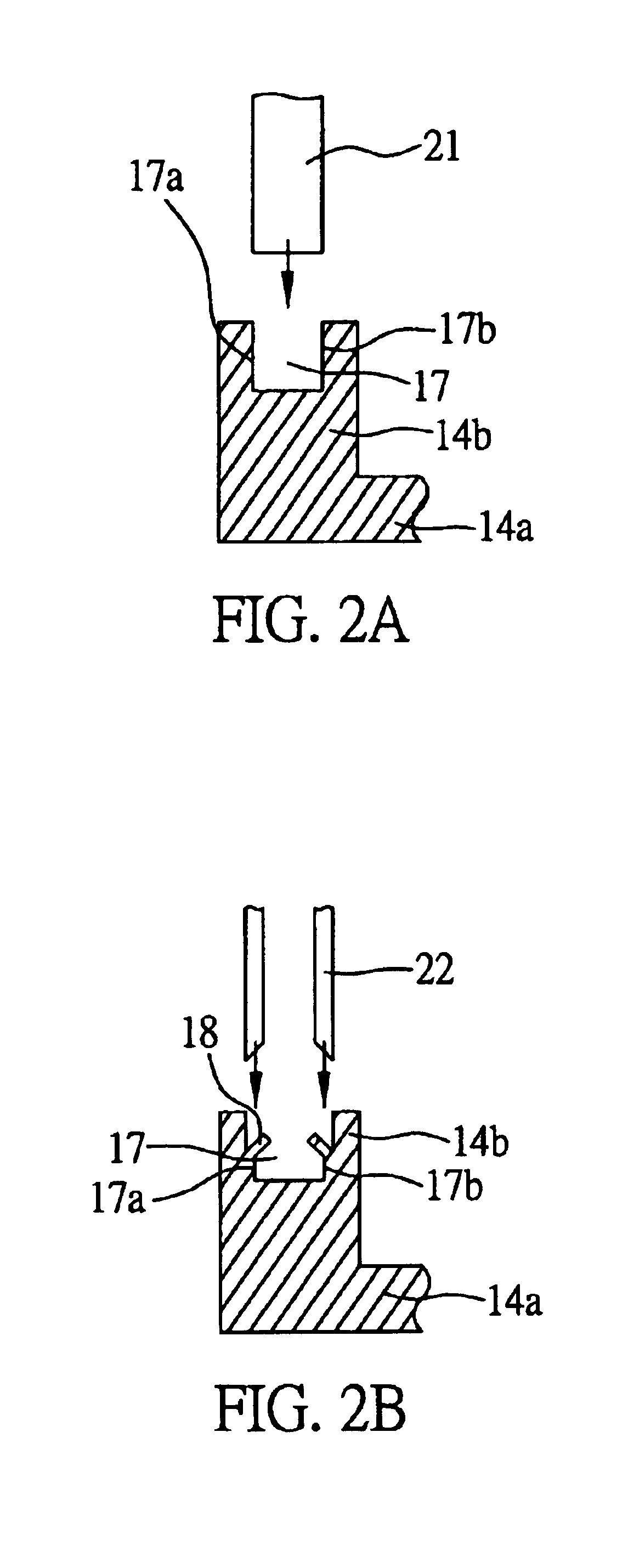Semiconductor package with heat sink
a technology of heat sink and semiconductor, applied in the direction of semiconductor devices, semiconductor/solid-state device details, electrical apparatus, etc., can solve the problems of dislocation of heat sink, difficult to firmly adhere and position heat sink on substrate, severe situation, etc., to increase the contact area, enhance the anchoring effect, and increase the contact area
- Summary
- Abstract
- Description
- Claims
- Application Information
AI Technical Summary
Benefits of technology
Problems solved by technology
Method used
Image
Examples
Embodiment Construction
Preferred embodiments of a semiconductor package with a heat sink according to the present invention are described in detail with references to FIGS. 1 through 10.
FIGS. 1A and 1B show the semiconductor package 1 according to a preferred embodiment of the invention. As shown in the drawings, this semiconductor package 1 uses a substrate 10 as a chip carrier primarily made of a conventional resin material such as epoxy resin, polyimide resin, BT (Bismaleimide Triazine) resin, FR4 resin, etc.
The substrate 10 has a top surface 10a and a bottom surface 10b. The top surface 10a of the substrate 10 is formed with a plurality of bond pads (not shown) at predetermined positions where solder bumps 11 are bonded, and the bottom surface 10b of the substrate 10 is formed with a plurality of ball pads (not shown) for being implanted with solder baits 16. The substrate 10 is fabricated by conventional processes that are not to be further detailed herein.
At least one chip 12 is prepared, having an ...
PUM
 Login to View More
Login to View More Abstract
Description
Claims
Application Information
 Login to View More
Login to View More - R&D
- Intellectual Property
- Life Sciences
- Materials
- Tech Scout
- Unparalleled Data Quality
- Higher Quality Content
- 60% Fewer Hallucinations
Browse by: Latest US Patents, China's latest patents, Technical Efficacy Thesaurus, Application Domain, Technology Topic, Popular Technical Reports.
© 2025 PatSnap. All rights reserved.Legal|Privacy policy|Modern Slavery Act Transparency Statement|Sitemap|About US| Contact US: help@patsnap.com



